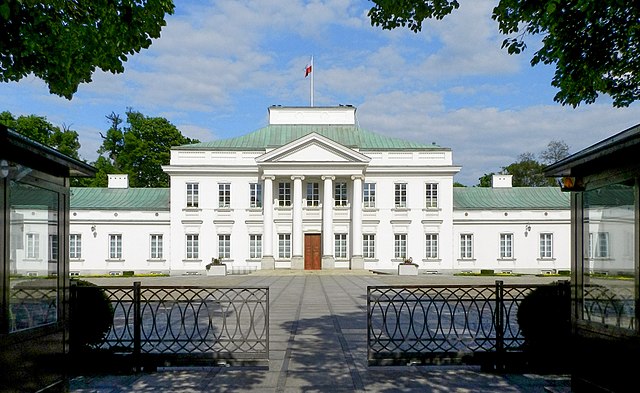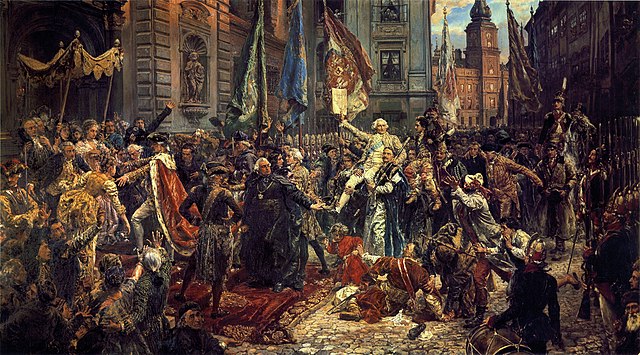The president of Poland, officially the president of the Republic of Poland, is the head of state of the Republic of Poland. Their rights and obligations are determined in the Constitution of Poland. The president heads the executive branch. In addition, the president has the right to dissolve parliament in certain cases, can veto legislation, represents Poland in the international arena, and is the commander-in-chief.
President of Poland
The Presidential Palace in Warsaw. It serves as the official seat of presidency.
The Belweder Palace, often known simply as 'Belvedere', is the traditional (now secondary) official residence of the president.
The office of the president at the Presidential Palace in Warsaw
The Constitution of the Republic of Poland is the supreme law of the Republic of Poland, which is also commonly called the Third Polish Republic in contrast with the preceding systems.
A copy of the Constitution signed by candidates after the debate of 2 July, before the 2010 Polish presidential election, exhibited in the Sejm
Stefan Wilkanowicz developed the preamble
Tadeusz Mazowiecki presented the finally adopted preamble
3 May 1791 Constitution (painting by Jan Matejko, 1891). King Stanisław August (left, in regal ermine-trimmed cloak), enters St. John's Cathedral, where Sejm deputies will swear to uphold the new Constitution; in background, Warsaw's Royal Castle, where the Constitution has just been adopted.








